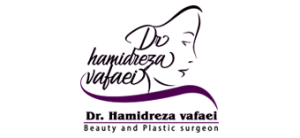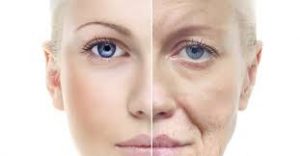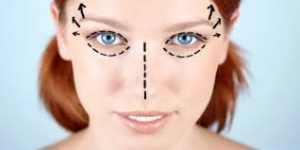Facial Plastic Surgery
Facial Plastic Surgery
Facial plastic surgery is an artistic subspecialty, which encompasses both reconstructive and cosmetic procedures. Facial plastic surgery is a constantly evolving field with innovative advances in surgical techniques and cosmetic adjunctive technologies. Today, many conditions such as the effects of aging, sun damage, previous facial trauma, etc. can be corrected through procedures performed by a skilled surgeon.
The decision to undergo facial plastic surgery is a very personal and important one. It requires mutual understanding and communication between you and your surgeon. Patients should ask all of their questions about details, risks and, results of their desired procedure before undergoing the it.
Goals of Facial Plastic Surgery
The goal of facial plastic surgery is to make you look as good as possible and improve your facial features’ function. Facial plastic surgery is performed to reshape structures in the head and neck, typically the nose, ears, chin, cheekbones and jawline. Some people who consider this surgery may desire to reconstruct their face after an injury, disease or birth defect. Some others may want to make the features of their face appear natural and in proportion with one another, or reverse the signs of aging, remove contour irregularities or deformities.
Rejuvenative Facial Surgery
- Surgical and non-surgical rejuvenation of the face: facelift, eyelid surgery, deeper laser and chemical facial peels, facial fillers, and Botox.
- Reconstruction and cosmetic surgery of the face: rhinoplasty, cleft lip, otoplasty, and scar revision.
- Reanimation of patients with a paralyzed face (facial nerve disorders): physical therapy, Botox treatment (helps balance out the face, for both appearance and function), and surgery.
Some of facial plastic Procedures (surgical and non-surgical)
Facelift Surgery (Rhytidectomy)
A facelift, or rhytidectomy, is a cosmetic surgery of the skin on the face and neck to tighten the skin and remove excess wrinkles. The procedure can reduce the sagging or folds of skin on the cheeks and jawline and other signs of aging to create a younger appearance in your face.
As you age, the appearance and shape of your face changes because of age-related changes. The skin becomes looser and lose its elasticity, and in some areas of the face, fat deposits decrease and in others they increase. So if you have excess skin at your jowls, deep laugh lines, and sagging cheeks, you can benefit from facelift surgery.
During a facelift surgery, a facial plastic surgeon pulls back a flap of skin on each side of the face and lift and tighten the underlying muscles of the face to rejuvenate the facial structure. Before closing the flap, he/she removes excess skin.
Neck Lift
A neck lift, or lower rhytidectomy, is a cosmetic procedure that improves visible signs of aging in the jawline and neck. It removes excess fat and skin around those areas. Results can be long lasting, but neck lift surgery cannot stop the aging process. It is often done as part of a facelift surgery.
If you have excess fat and skin relaxation in the lower face, loose neck skin, fatty deposits under the chin, and muscle banding in the neck, neck lift may be a good option for you.
Eyelid Surgery (Blepharoplasty)
Eyelid surgery, or blepharoplasty, is a type of surgery that improves the function of the upper and/or lower eyelids (like droopy eyelids) and/or appearance of the eye. The procedure may involve removing excess skin, muscle and fat.
Some of the signs of aging is weakened muscles around the eyes and excess fat above and below your eyelids that cause sagging eyebrows, droopy upper lids and bags under your eyes. Severely sagging skin around your eyes can also reduce your side vision. In these case blepharoplasty is a good option by removing excess tissue from your upper eyelids.
Thus, if you have droopy upper eyelids, bags under your eyes, or excess skin that interferes with your vision, you can benefit from blepharoplasty.
Otoplasty
Otoplasty, also known as cosmetic ear surgery, is a surgical procedure to change the shape, size or position of the ears. This surgery is typically done on both ears to optimize symmetry. It can be performed on children and adults both at any age after the ears have reached their full size (usually after age 5).
There are a number of reasons why otoplasty may be performed. Most people undergo otoplasty when they are bothered by how far their ears stick out from their head. The surgery reshapes the cartilage of the ears so they protrude less. Generally, otoplasty is a good option for those whose ears are misshapen due to an injury or birth defect, people with large ears, and individuals whose ears stick out too far from their head.
Rhinoplasty
Rhinoplasty, commonly known as nose job, is surgery that improves the appearance and function of the nose by reshaping and rebuilding cartilage and bone. It can change the size, shape or proportions of the nose and/or may be done to repair deformities from an injury, correct a birth defect or improve some breathing difficulties.
The most common reasons for people wanting rhinoplasty include nasal polyps, nose humps, too wide, round, blobby, beaked tip, length of their nose, an injury to the nose, functional breathing problems, etc.
Cleft Lip and Palate Repair
Cleft lip and cleft palate are among the most common birth defects. They are openings or splits in the upper lip, the palate or both and occur when facial structures that are developing in an unborn baby do not close completely.
Fortunately, this birth defect can be corrected. In most babies, a series of surgeries can restore normal function and achieve a normal appearance with minimal scarring.
Cleft repair surgery involves reconstructing the shape of the lip and the nose and joining the tissues that did not join together. There are a number of different techniques depending on the shape of the baby’s cleft and the surgeon’s preference. The aim is for the best possible functional and aesthetic outcome as your child gets older.
Botox injections
Botox is the brand name of a toxin produced by the bacterium Clostridium botulinum. Botox injections are known primarily for the ability to reduce the appearance of facial wrinkles. They are also used to treat conditions such as neck spasms (cervical dystonia), severe sweating (hyperhidrosis), an overactive bladder and lazy eye. Botox injections may help prevent chronic migraines too. It should be said that this toxin is not a cure, and your symptoms will gradually return as the medication wears off.
Botox injections block certain chemical signals from nerves, mostly signals that cause muscles to contract. The most common use of these injections is to temporarily relax the facial muscles that cause wrinkles in the forehead and around the eyes. Botox injections are also used to treat conditions that affect how the body functions.
Facial Fillers
Facial fillers are gel-like substances that are injected into the lines, folds, and tissues of the face to decrease the appearance of wrinkles and restore the facial fullness that decreases with age. They are used to erase smile lines, plump up cheeks and lips, and correct acne scars. Injection of a facial filler is done under local anesthesia and as an outpatient procedure. The procedure takes up to an hour.
If you want to smooth out lines around nose and mouth, enhance and restore volume to sunken cheeks or temples, plump up the lips, diminish vertical lip lines, or improve symmetry among facial features, you can use facial fillers.











Leave a Reply
Want to join the discussion?Feel free to contribute!